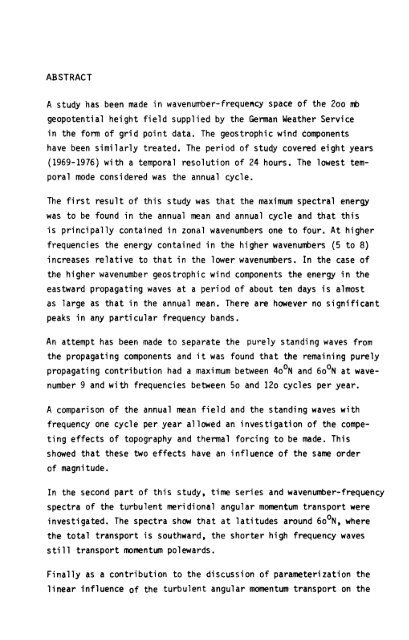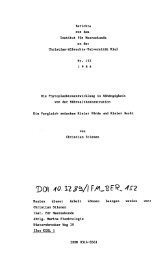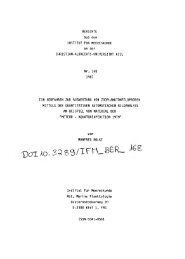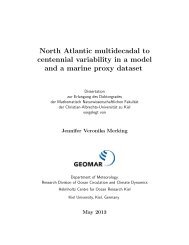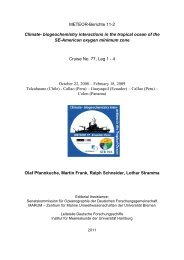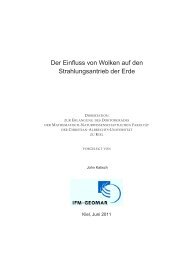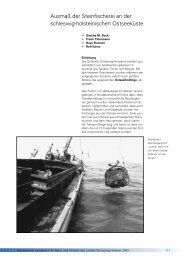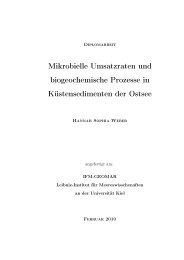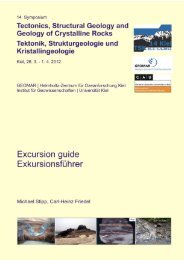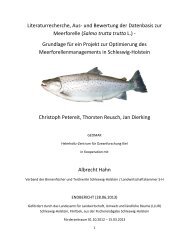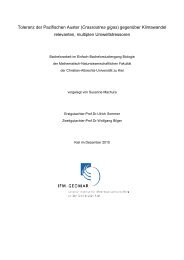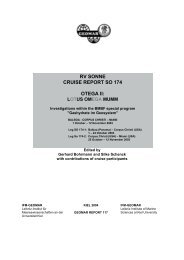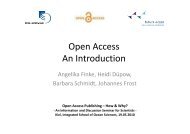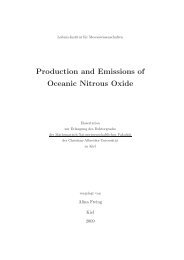Download (3366Kb) - OceanRep
Download (3366Kb) - OceanRep
Download (3366Kb) - OceanRep
Erfolgreiche ePaper selbst erstellen
Machen Sie aus Ihren PDF Publikationen ein blätterbares Flipbook mit unserer einzigartigen Google optimierten e-Paper Software.
ABSTRACT<br />
A study has been made in wavenumber-freque"cy space of the 2oo mb<br />
geopotential height field supplied by the German Weather Service<br />
in the form of grid point data. The geostrophic wind components<br />
have been similarly treated. The period of study covered eight years<br />
(1969-1976) with a temporal resolution of 24 hours. The lowest temporal<br />
mode considered was the annual cycle.<br />
The first result of this study was that the maximum spectral energy<br />
was to be found in the annual mean and annual cycle and that this<br />
is principally contained in zonal wavenumbers one to four. At higher<br />
frequencies the energy contained in the higher wavenumbers (5 to 8)<br />
increases relative to that in the lower wavenumbers. In the case of<br />
the higher wavenumber geostrophic wind components the energy in the<br />
eastward propagating waves at a period of about ten days is almost<br />
as large as that in the annual mean. There are however no significant<br />
peaks in any particular frequency bands.<br />
An attempt has been made to separate the purely standing waves from<br />
the propagating components and it was found that the remaining purely<br />
propagating contribution had a maximum between 4o 0 N and 6o 0 N at wavenumber<br />
9 and with frequencies between 5o and 12o cycles per year.<br />
A comparison of the annual mean field and the standing waves with<br />
frequency one cycle per year allowed an investigation of the competing<br />
effects of topography and thermal forcing to be made. This<br />
showed that these two effects have an influence of the same order<br />
of magnitude.<br />
In the secend part of this study, time series and wavenumber-frequency<br />
spectra of the turbulent meridional angular momentum transport were<br />
investigated. The spectra show that at latitudes around 6o 0 N, where<br />
the total transport is southward, the shorter high frequency waves<br />
still transport momentum polewards.<br />
Finally as a contribution to the discussion of parameterization the<br />
linear fnfluence of the turbulent angular momentum transport on the


